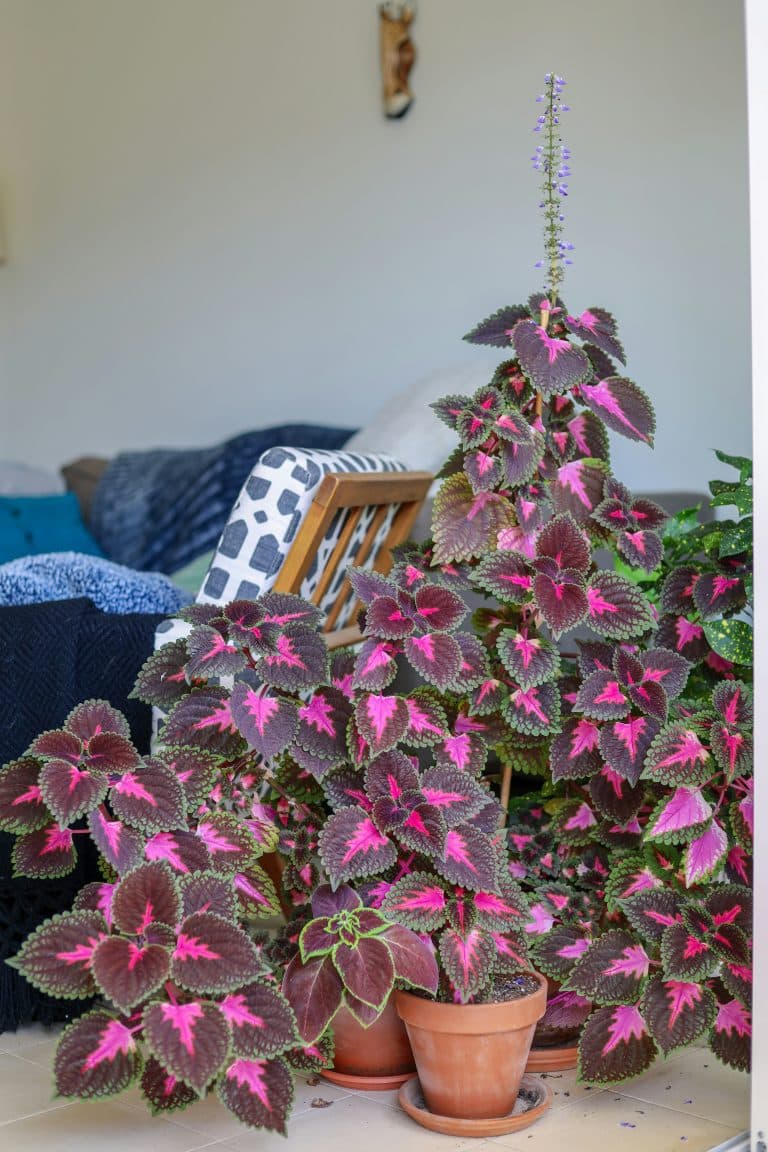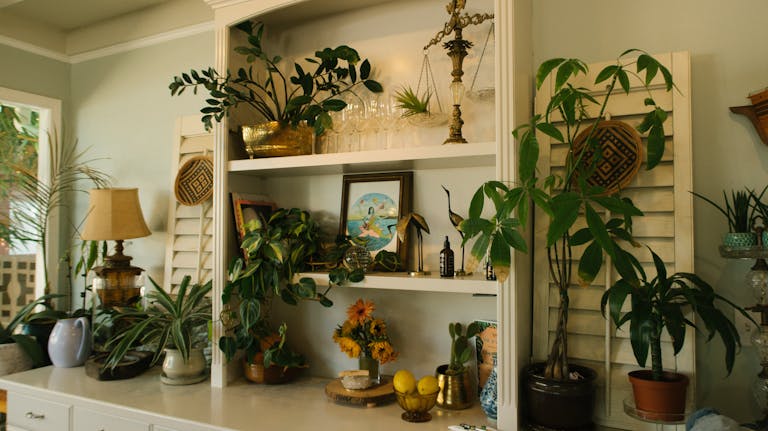Best Trailing indoor plants for shelves and hanging baskets
Explore our curated list of Trailing indoor plants for shelves and hanging baskets, grown in our Brooklyn community home. Discover the care and maintenance tips, along with how to decorate them in your home!
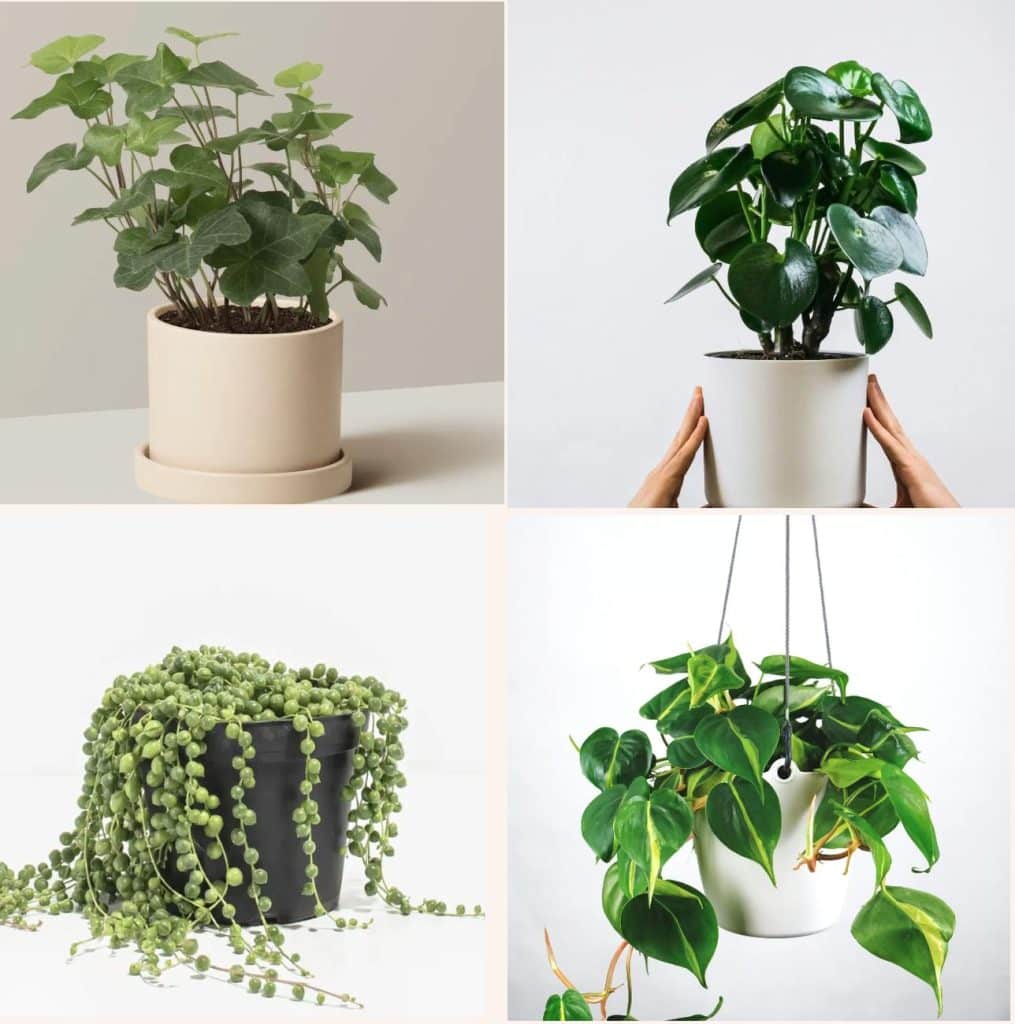
When you purchase through links on our site, we may earn an affiliate commission, which helps sustain our blog!
Looking to green up your shelves or create a living chandelier with hanging baskets? Trailing houseplants are perfect for adding softness, vertical drama, and a jungle-like vibe to your home. Whether you’re styling floating shelves, bookcases, or ceiling planters, this guide breaks down the best trailing houseplants for shelves and hanging baskets — along with pet safety, growth, light and watering needs.
Let’s find your perfect trailing match!
Summary:
- Best trailing houseplants for shelves are: Philodendron, Peperomia, tradescantia, English Ivy.
- Best trailing houseplants for hanging baskets are: Pothos, String of Pearls, Spider plant.
Snapshot of our Top 3 picks(Swipe left)
1. Philodendron
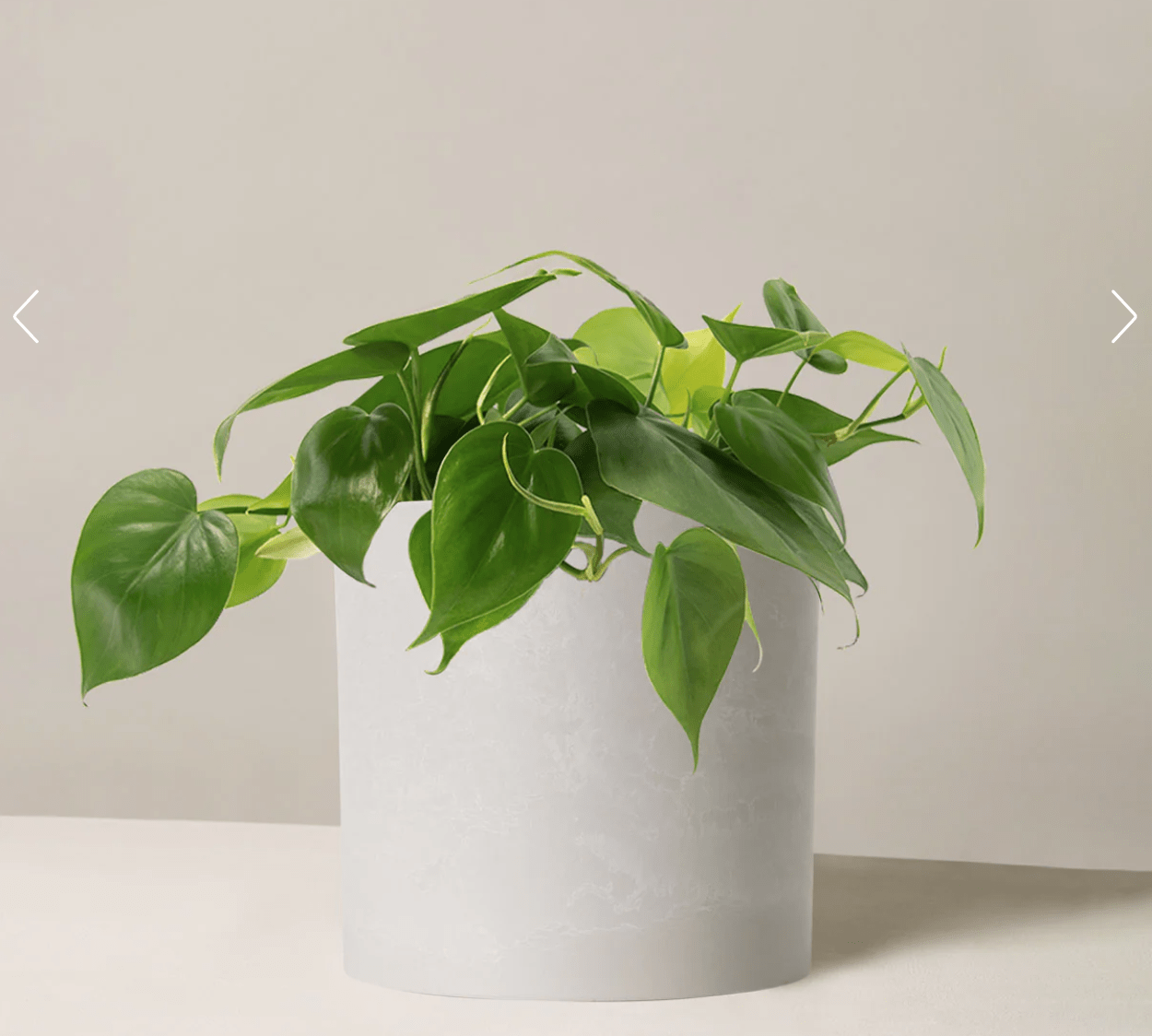
2.String of Pearls

3. Peperomia

Best trailing indoor plants for shelves
1. Philodendron
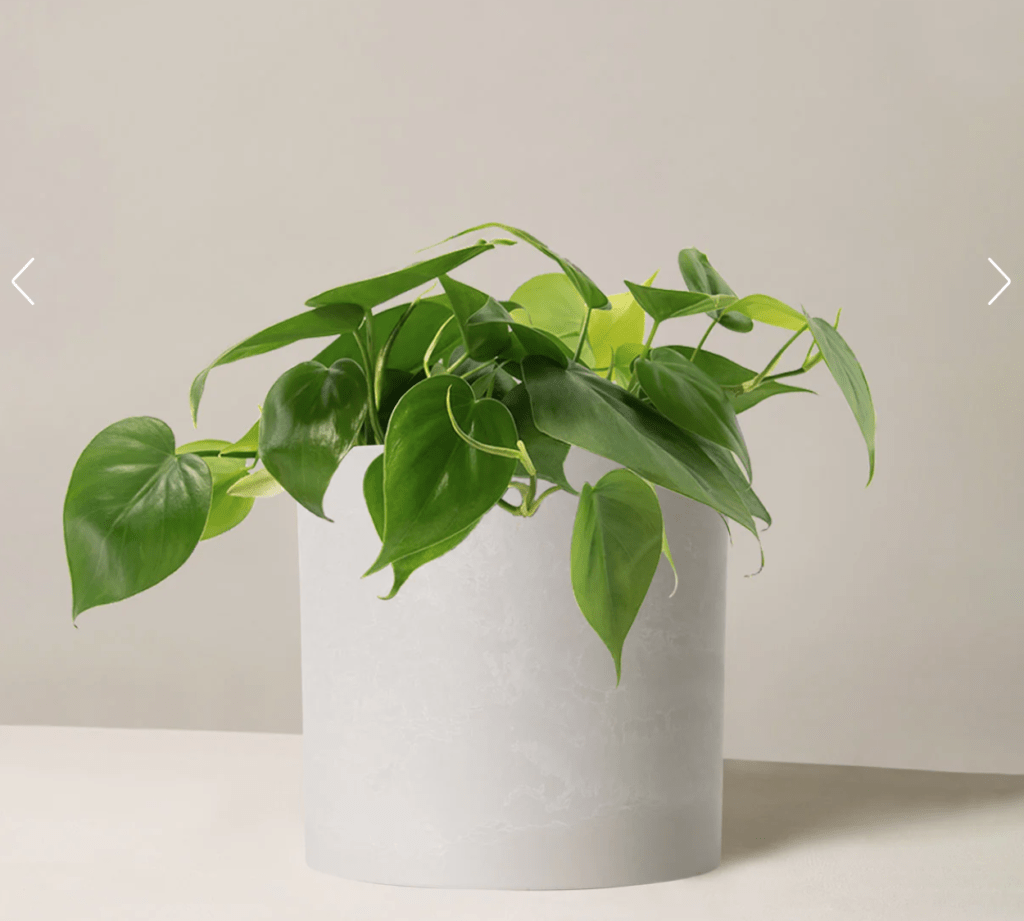
Toxic
Low/Medium light
Grows upto 4 feet
East/west facing windows
Toxic
Low/Medium light
grows to 4 feet
East/West facing windows
The Heartleaf Philodendron (aka Philodendron hederaceum) from the Araceae family has glossy, heart-shaped leaves cascading beautifully, and creating a lush, draping effect. It softens sharp corners and fills blank spaces. We’ve placed ours in a west-facing bedroom where it gets the medium, indirect light it thrives in—no sunburn, no drooping.
We’ve styled it in a matte ceramic hanging planter with a warm terracotta hue—it pops beautifully against brown shelves and lets the vines tumble with ease.
Read also: Philodendron Micans and Pink Princess philodendron care and styling tips
Care tip:
- Thrive in bright, indirect light — need watering when the top inch of soil is dry. Avoid direct sunlight to prevent leaf burn . They’re low-maintenance — don’t let the furry animals ingest the leaves.
Propagation tip:
- Cut a 6-inch stem with at least one node, place it in water until roots are 1-2 inches long (about 4-6 weeks), then transplant into well-draining soil
Symbolism and zodiac signs:
- Often associated with health and growth — it is well-suited for Pisces for their nurturing and caring nature
Pros and cons
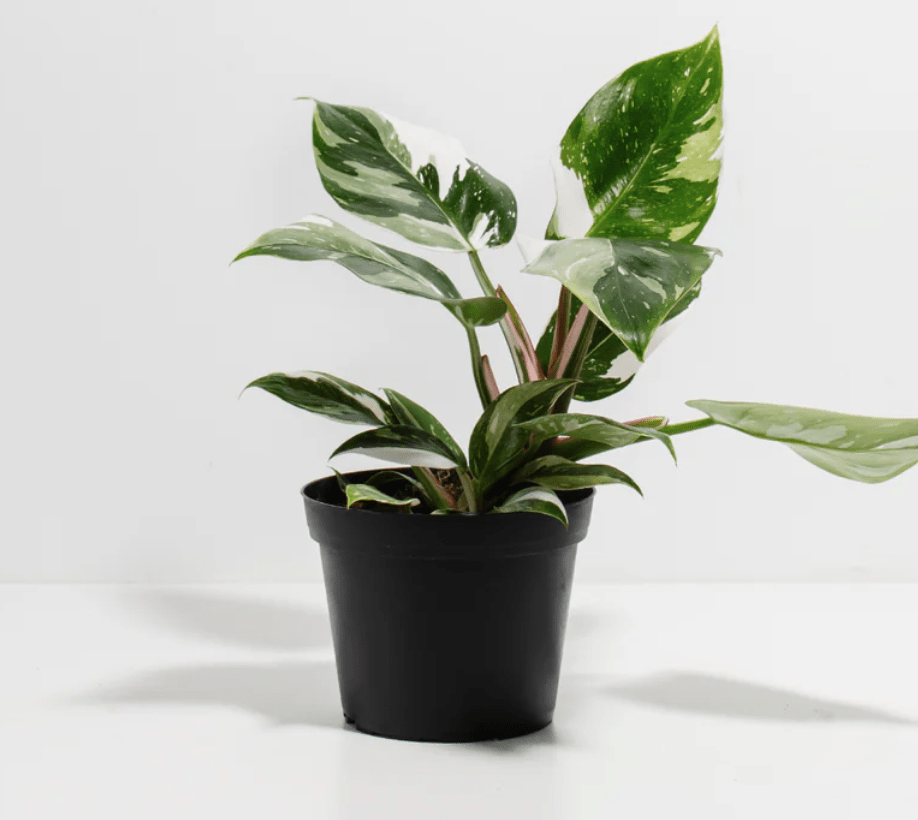
($43)

($48)
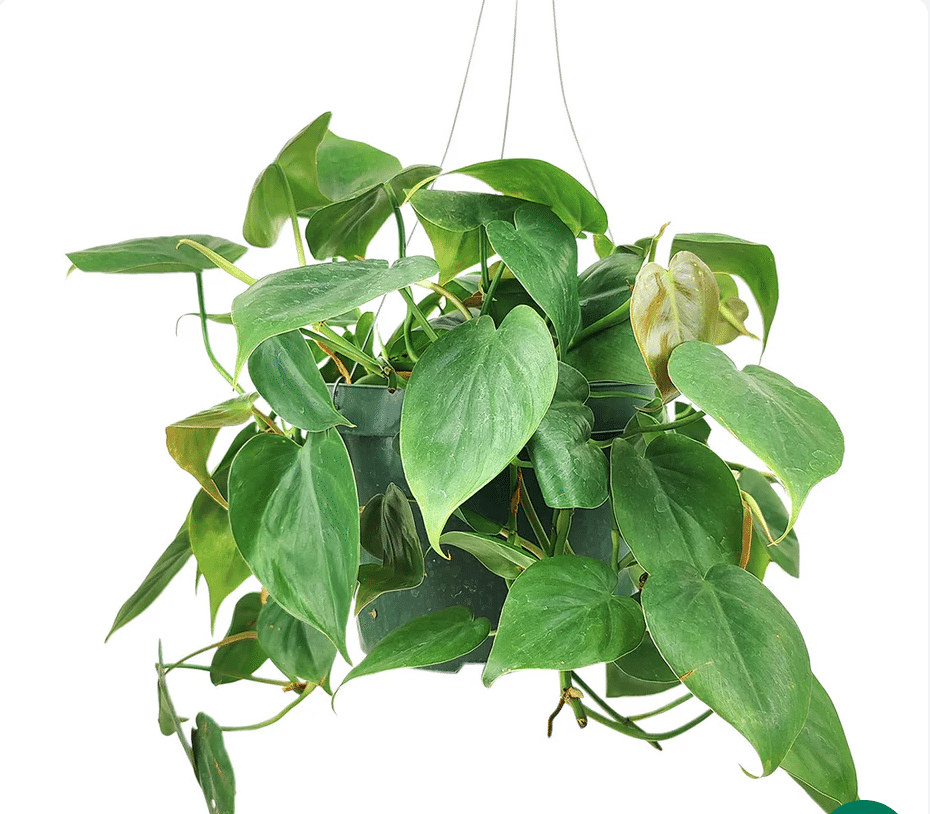
($17)
($22)
“Philodendron is stunning and easy to care for. It’s growing beautifully and quickly!” – Amazon Customer
2. Peperomia
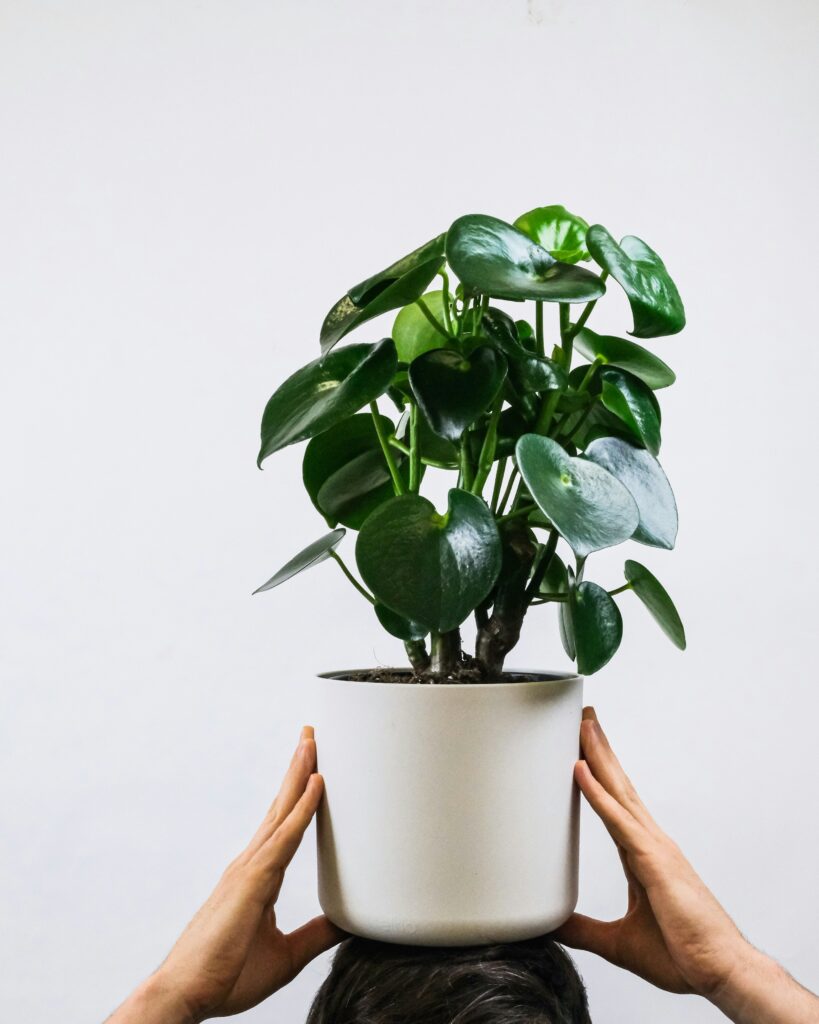
Pet safe
Medium to bright light
Grows upto 4 feet
West/South facing windows
Pet safe
Medium to Bright light
grows to 4 feet
West/south facing windows
The Watermelon Peperomia (aka Peperomia argyreia), part of the Piperaceae family, adds charm to any shelf with its round, fleshy leaves patterned like tiny watermelons—green with striking silver stripes and deep red stems!
We’ve placed ours in a medium-light east-facing reading room in a wide, low ceramic planter that allows the leaves to spread naturally—it looks especially good when grouped with taller trailing plants for contrast. It’s considered non-toxic to pets by the ASPCA, which we love!
Care tip:
- Water your Peperomia every 1-2 weeks.
- Place it in medium bright, indirect light, such as an east-facing room.
- Watch for yellowing leaves, which can indicate overwatering
Propagation tip:
- Cut a healthy leaf with at least one inch of stem and place it in water.
- Use a jar that allows the stem to be submerged while the leaf stays above water.
- Roots should start forming in 2-3 weeks. Transfer to well-draining potting soil once roots are 1-2 inches long
Symbolism and zodiac signs:
- Symbolizes friendship and positive energy. It is a perfect match for the sociable and caring Libra
Pros and cons
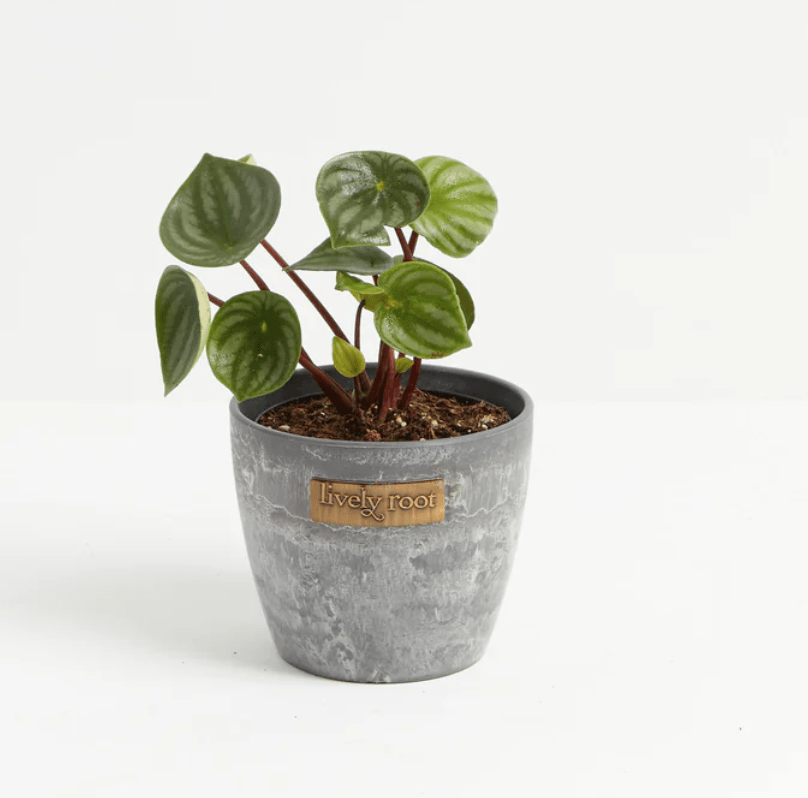
($43)
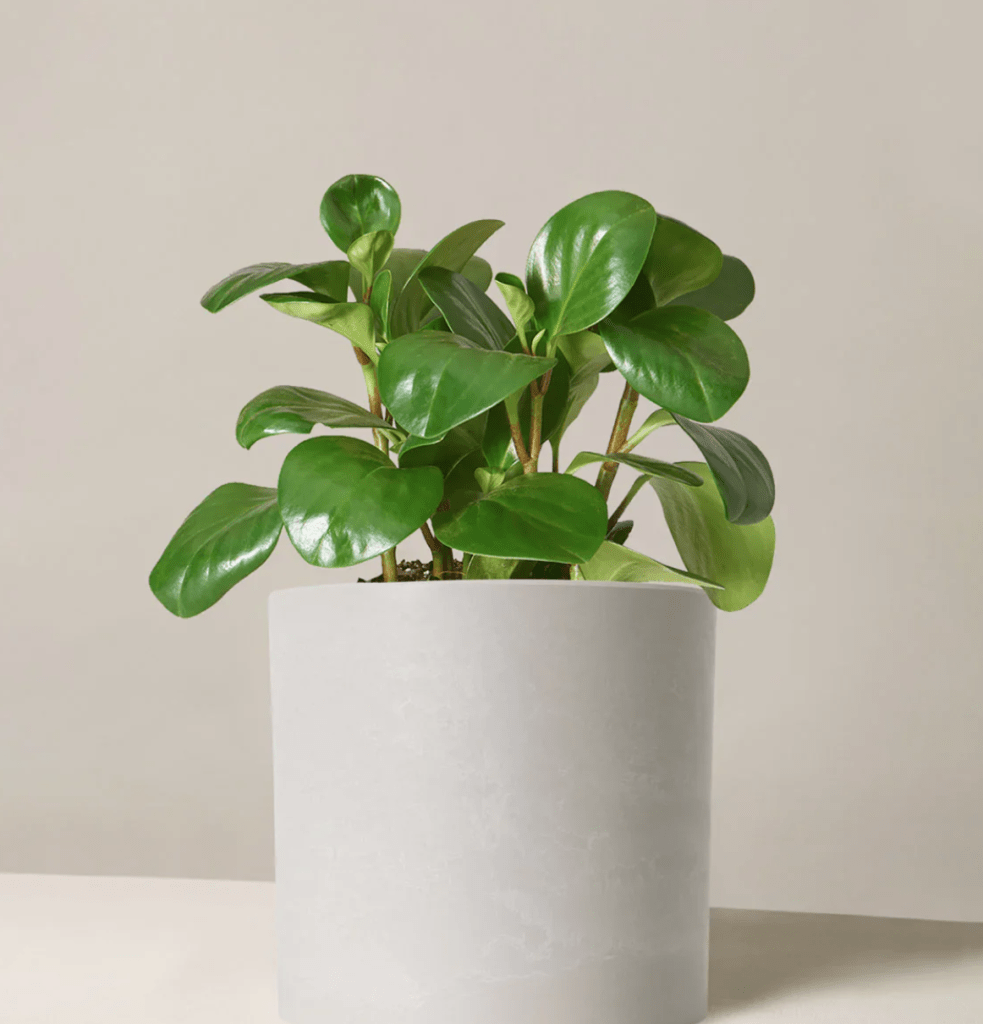
($58)
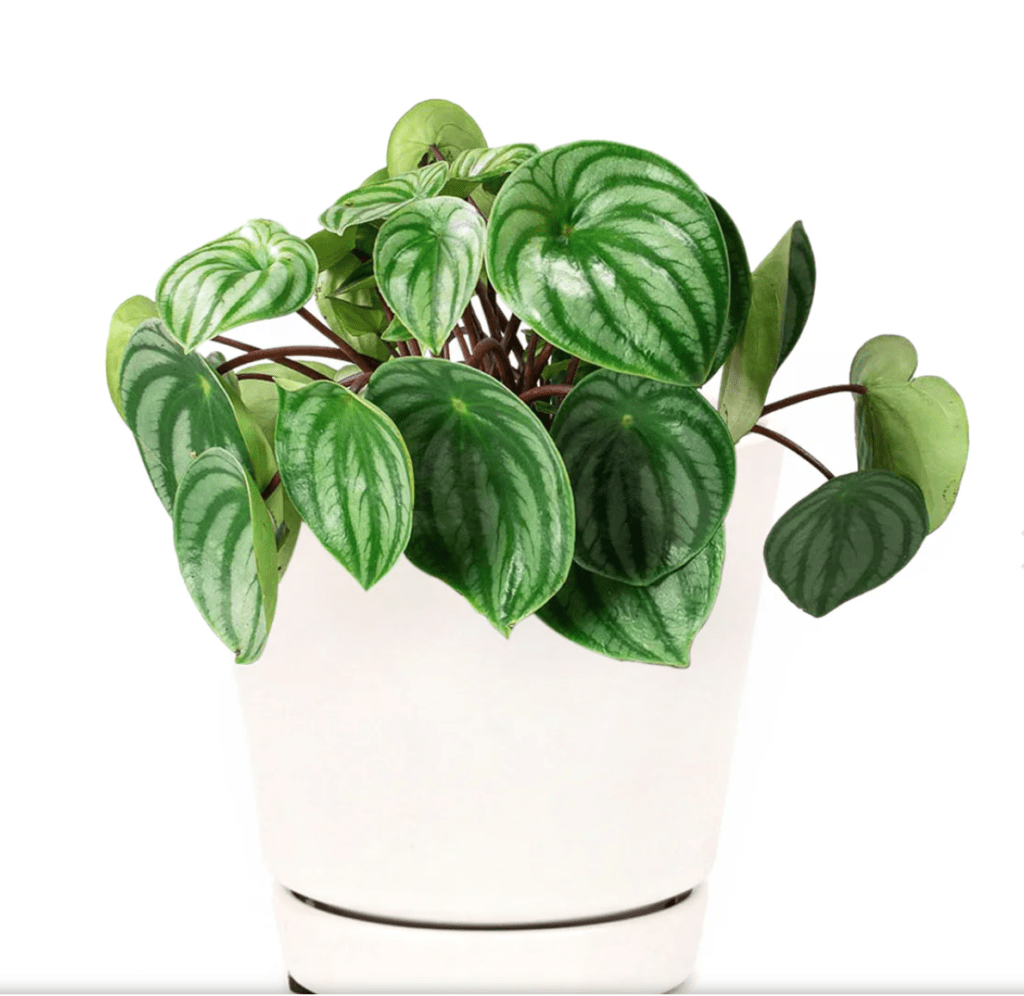
($26)
$20
“So easy to maintain. It likes to be neglected sometimes i don’t water for 3 weeks and its fine!” – Amazon customer
3. Tradescantia
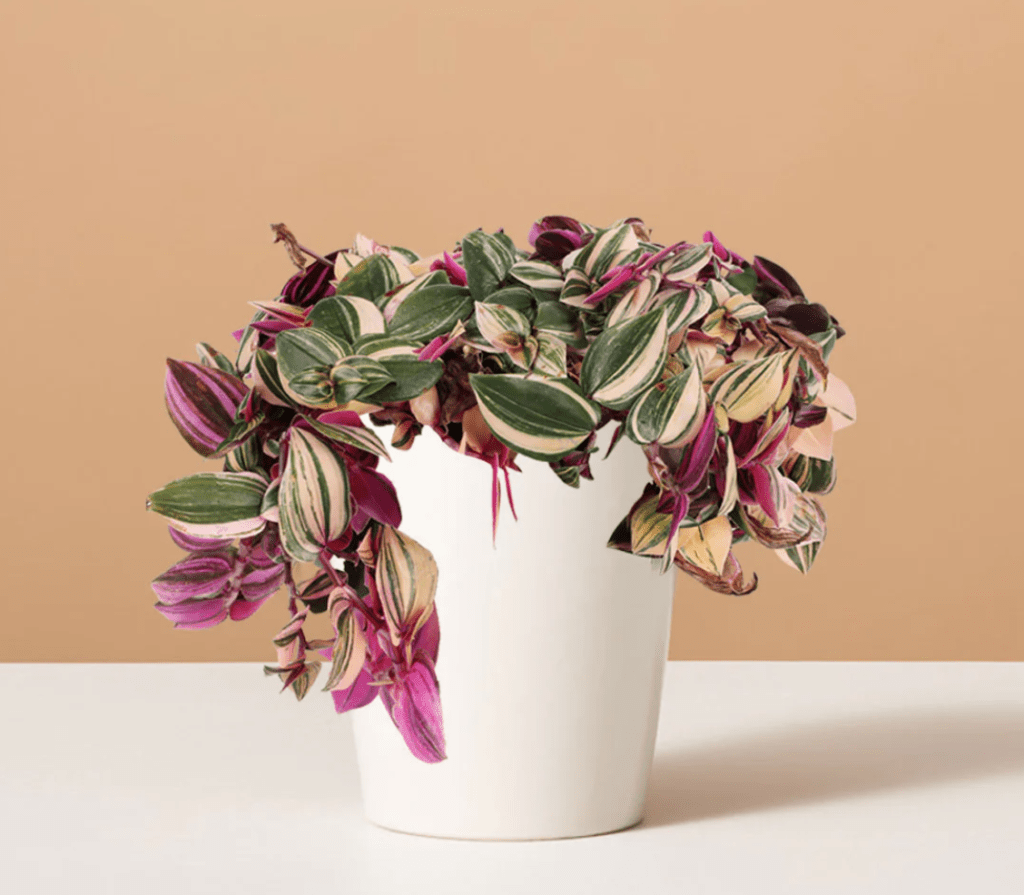
Toxic
Low to medium light
Grows upto 5 feet
East/North facing windows
Toxic
Low to medium light
grows to 4 feet
East/North facing windows
From the Commelinaceae family, this plant brings movement and color to any space with its trailing purple-and-silver striped leaves and shimmery undersides. The leaves are lance-shaped and grow densely along soft, flexible stems that spill over planters in no time—perfect for shelves that need a little drama!
We’ve placed ours in a ceramic wall planter in the east-facing reading room where it gets bright, indirect light throughout the morning. It’s fast-growing, low-maintenance, and worth the regular pinching back to keep it bushy rather than leggy! You can refer to our guide to best soil and fertilizers for trailing plants such as tradescantias for more about its care.
Read also: Tradescantia Bubblegum, and Pink and purple vining houseplants
Care tip:
- The Rubber Plant thrives in low to medium indirect light.
- Needs watering when the top inch of soil is dry. Avoid direct sunlight to prevent leaf scorch.
- Mist occasionally to keep its bold foliage glossy!.
Propagation tip:
- Cut a 6-inch stem with at least two leaves, place it in water until roots are 1-2 inches long (about 4-6 weeks), then transplant into well-draining soil
Symbolism and zodiac signs:
- Symbolizes abundance and good fortune — perfect for Taurus, known for their patience and love for nurturing greenery
Pros and cons
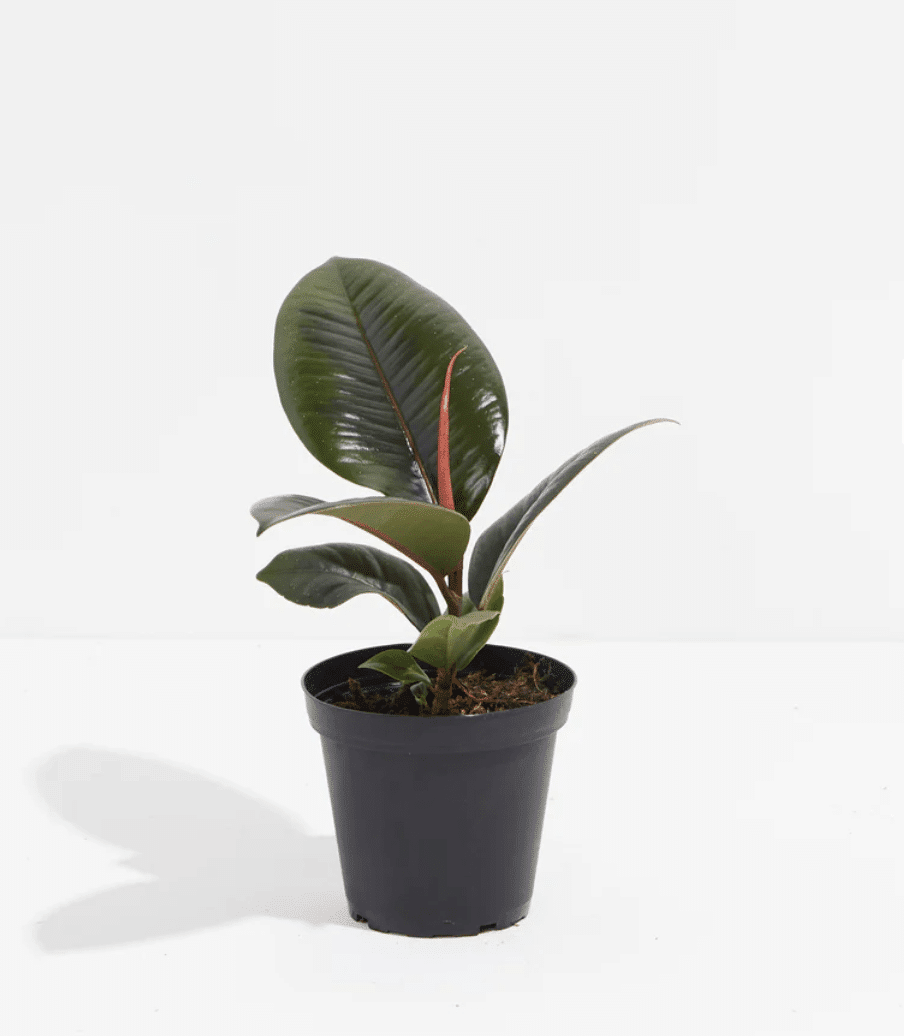
($43)
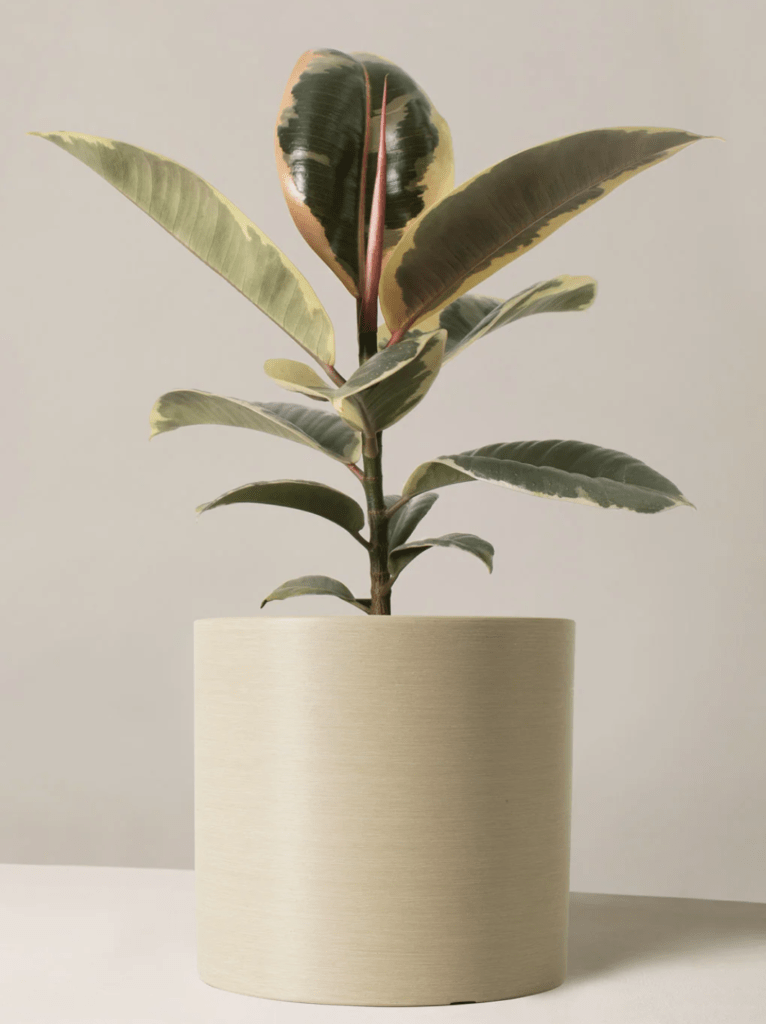
($48)

($19)
$43
“The Ficus is a statement piece in my living room. The variegated leaves are stunning and it’s very easy to care for”
4. English Ivy
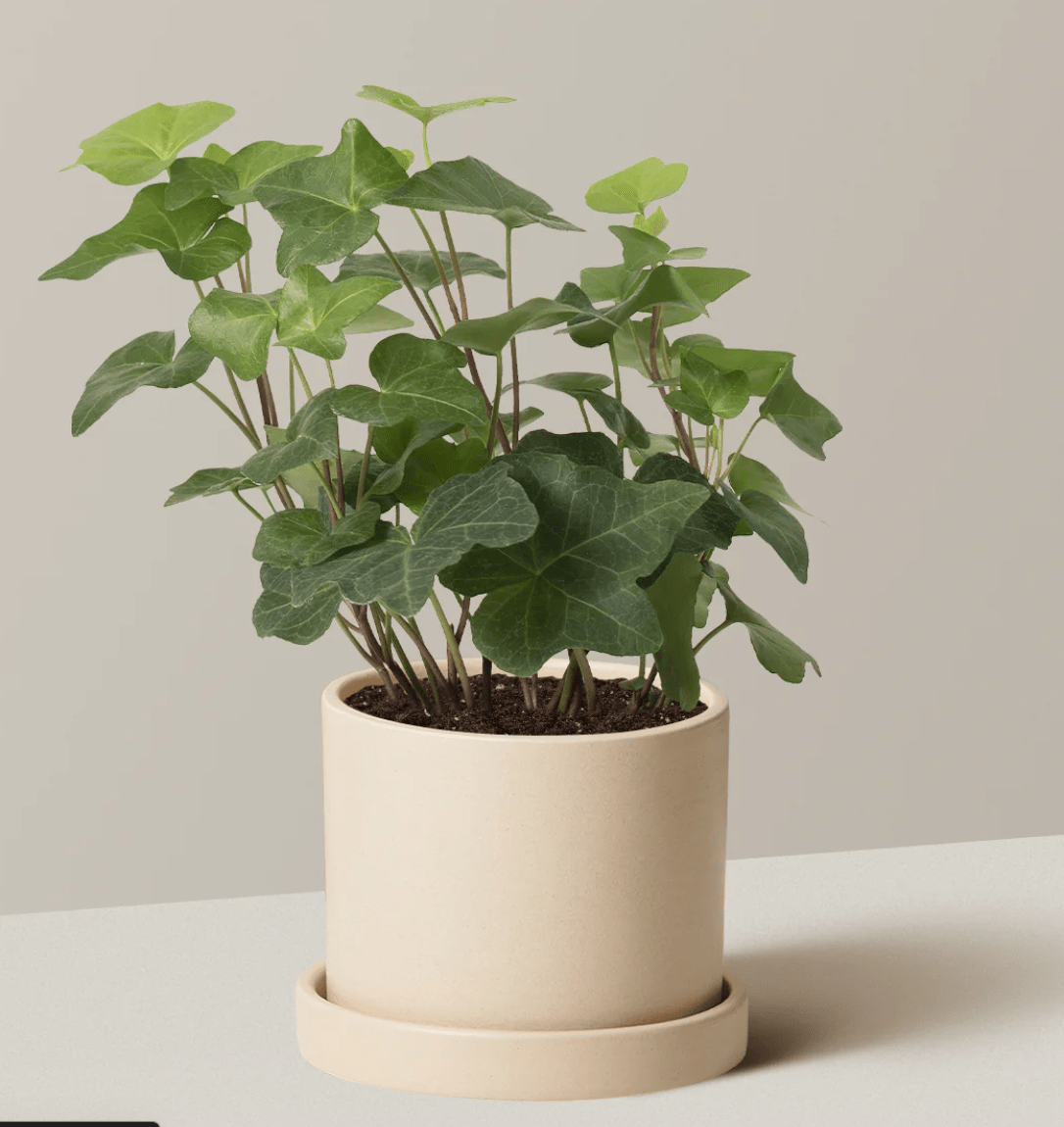
Toxic
Medium to Bright light
Grows upto 8 feet
east/north windows
Toxic
Medium to Bright light
grows to 8 feet
East/North facing windows
From the Araliaceae family, this plantsbrings a classic, trailing elegance to shelves with its lobed, deep green leaves that sometimes carry creamy white or pale yellow variegation. The leaves grow along slender vines that twist and climb or cascade, depending on how you guide them. Indoors, they can trail 6 to 8 feet or more over time!
We had once placed ours in a fabric pot inside a window box on a second-floor east-facing bedroom shelf
Care tip:
- Thrives in bright, indirect light — needs watering when the top inch of soil is dry.
- Mist regularly to maintain humidity and watch for yellow leaves which is a sign of overwatering.
- No direct sunlight for this one — its leaves scorch..
Propagation tip:
- Cut a 4-6 inch stem with at least three leaves, place it in water until roots are 1-2 inches long (about 4-6 weeks), then transplant into well-draining soil..
Symbolism and zodiac signs:
- English Ivy symbolizes fidelity and eternal life — well-suited for Capricorns for their dedication and perseverance
Pros and cons
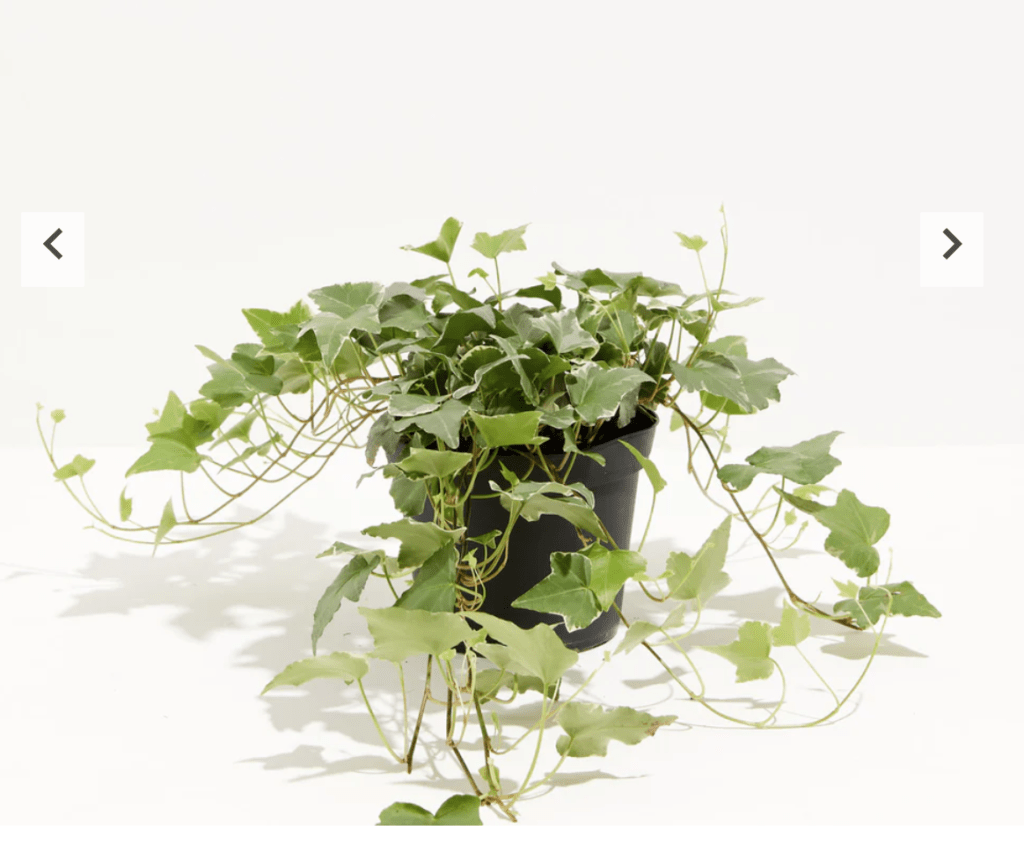
($58)

($33)

($19)
$24
“Great plant for beginners. It’s hardy and does well in indirect light”
Best trailing indoor plants for hanging baskets
1. Pothos
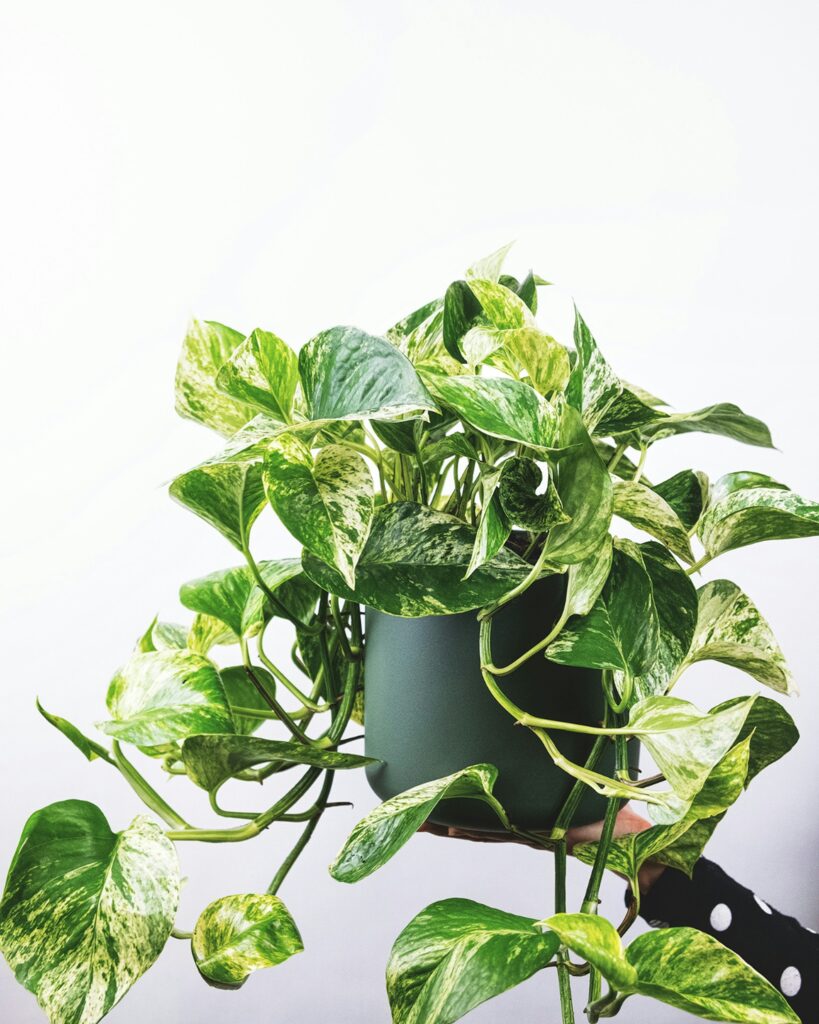
Toxic
low/medium light
Grows upto 8 -10feet
North/west/east facing windows
Toxic
lwo/Medium light
grows to 10 feet
North/West/East facing windows
The Golden Pothos (aka Epipremnum aureum), part of the Araceae family, is a go-to trailing plant for hanging baskets—and for good reason. Its heart-shaped leaves are marbled with yellow and green, and the vines grow quickly, often trailing over 10 feet indoors if you let them.
We had once placed ours in a concrete planter on an open shelf in a west-facing first-floor bedroom, but this plant is toxic to pets. Don’t let them trail too low and make sure to clean the fallen leaves if you have cats or dogs!
Read also: Hanging pothos care and styling tips
Care tip:
- Aim to water it every 1-2 weeks, allowing the soil to dry out slightly between waterings.
- Keep an eye out for yellowing leaves, which might indicate overwatering.
- A standout feature of this plant is its braided trunk that helps the tree store moisture, so occasional neglect in watering is often forgiven 🙂
Propagation tip:
- Select a healthy stem and cut a 6-inch piece just below a leaf node.
- Remove the leaves near the cut to prevent rotting.
- Place the stem in a glass of water, ensuring no leaves are submerged.
- Refresh the water weekly and keep the glass in a spot with indirect sunlight. Roots typically appear in about 4 weeks
Symbolism and zodiac signs:
- Symbolizes prosperity, good fortune, and financial success. Capricorns, known for their practicality, patience, and ambition, are particularly well-suited to nurture this plant.
Pros and cons
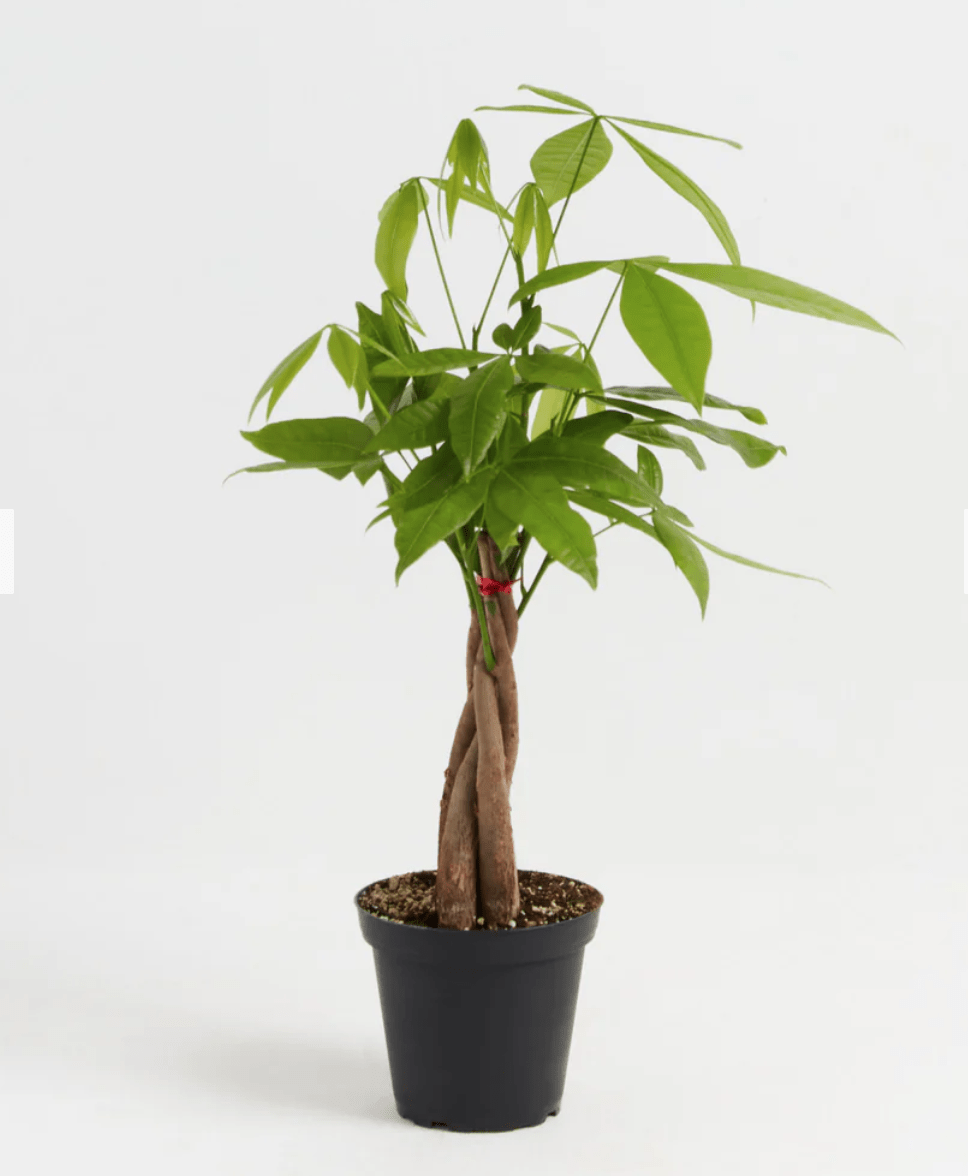
($43)
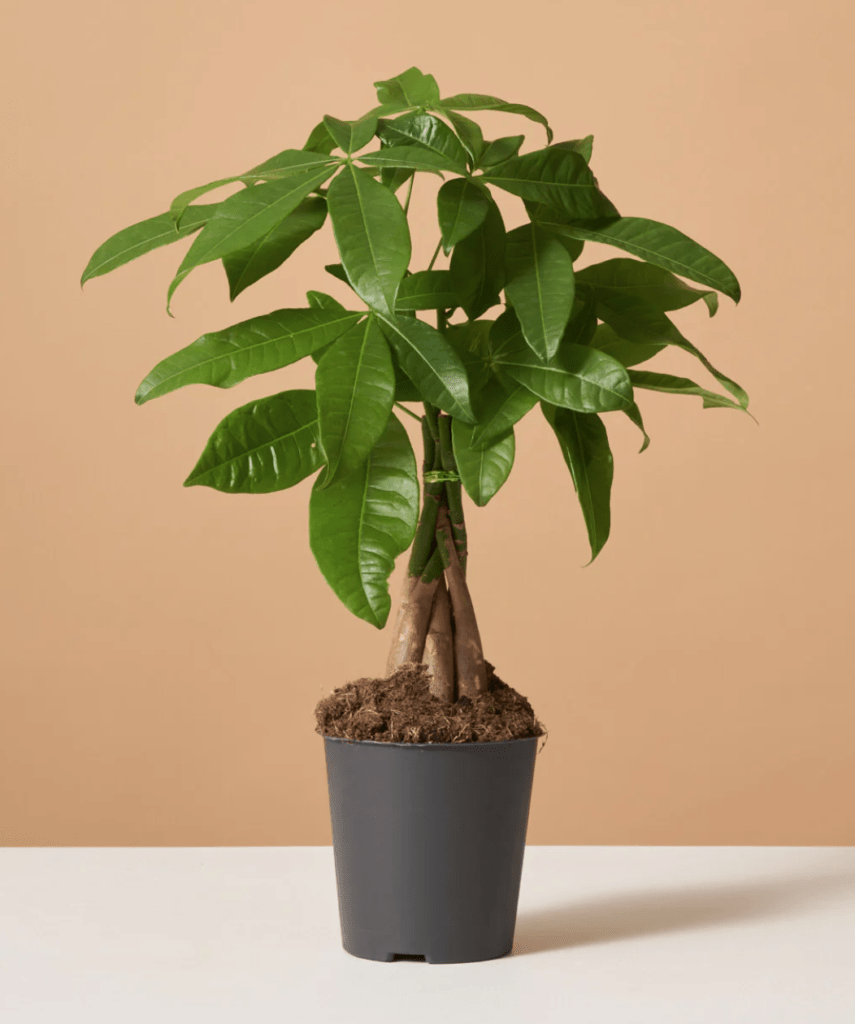
($48)
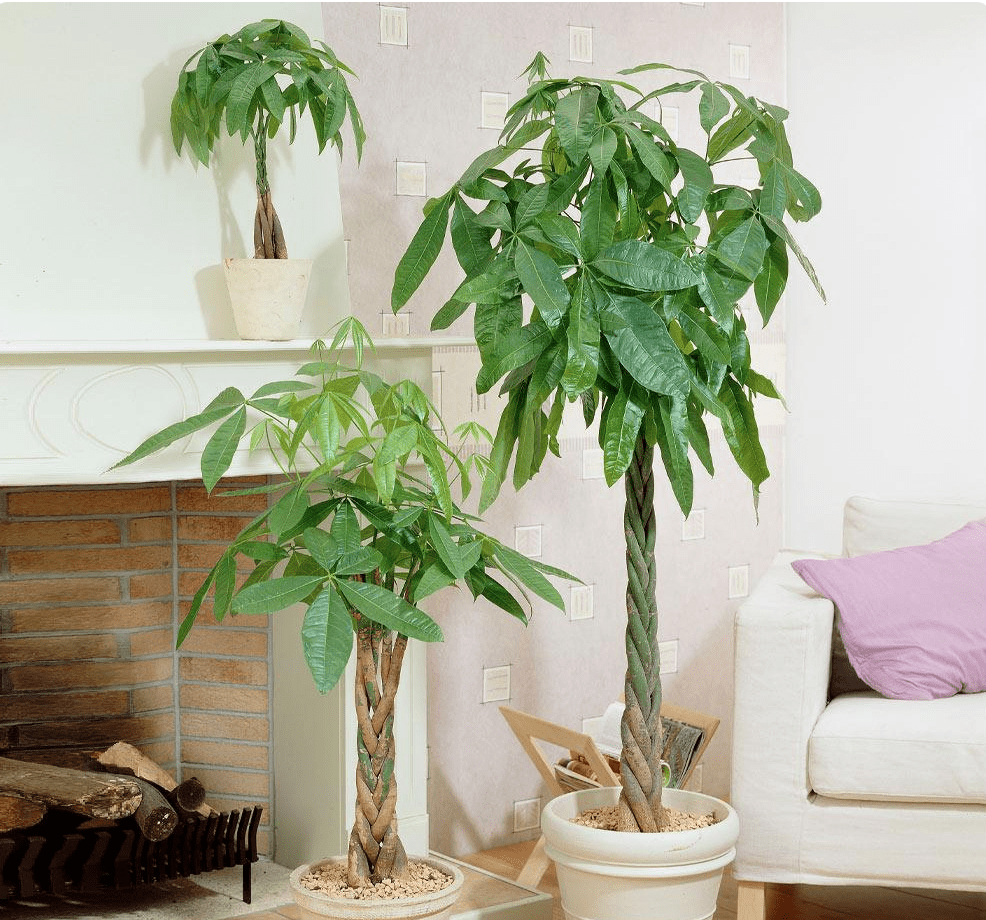
($39)
$33
“For over five years, this plant has been such a resilient and forgiving addition to my living room”
2. Spider plant

Pet safe
Medium/Bright light
Grows upto 6 feet
west/east facing windows
Pet safe
Medium/Bright light
grows to 6 feet
West/East facing windows
The Spider Plant (aka Chlorophytum comosum), from the Asparagaceae family,has lively, arching leaves—green with creamy white stripes—and its charming baby plantlets that dangle from long stems like living ornaments. Indoors, those stems can stretch 2–3 feet, and each little spiderette can grow roots if you let it touch soil.
We’ve placed ours in a ceramic wall planter in an east-facing second-floor bedroom. It thrives in that bright, indirect light and bounces back quickly if we forget a watering! We love styling it where the plantlets can trail freely—it adds movement and texture to the room!
Read also: Hanging spider plant, Curly spider plant care and styling tips
Care tip:
- Water weekly, allowing the top inch of soil to dry out between waterings.
- Place in bright, indirect light and avoid direct sunlight to prevent leaf scorch.
- Browning leaf tips can indicate fluoride sensitivity – try using distilled or rainwater.
Propagation tip:
- Place a spiderette in a glass jar filled with room temperature distilled water. Only roots are submerged, not the leaves.
- Place the jar in bright, indirect light and change the water every week or so to prevent stagnation.
- Roots should start to appear within a week or two. Once they are 2-3 inches long, transfer to soil.
Symbolism and zodiac signs:
- The Spider Plant symbolizes abundance, and purity, and good luck because of its prolific nature in producing offshoots. Perfectly suited for Virgo’s who are known for their attention to health and cleanliness, and are most apt to care for this plant.
Pros and cons

($43)
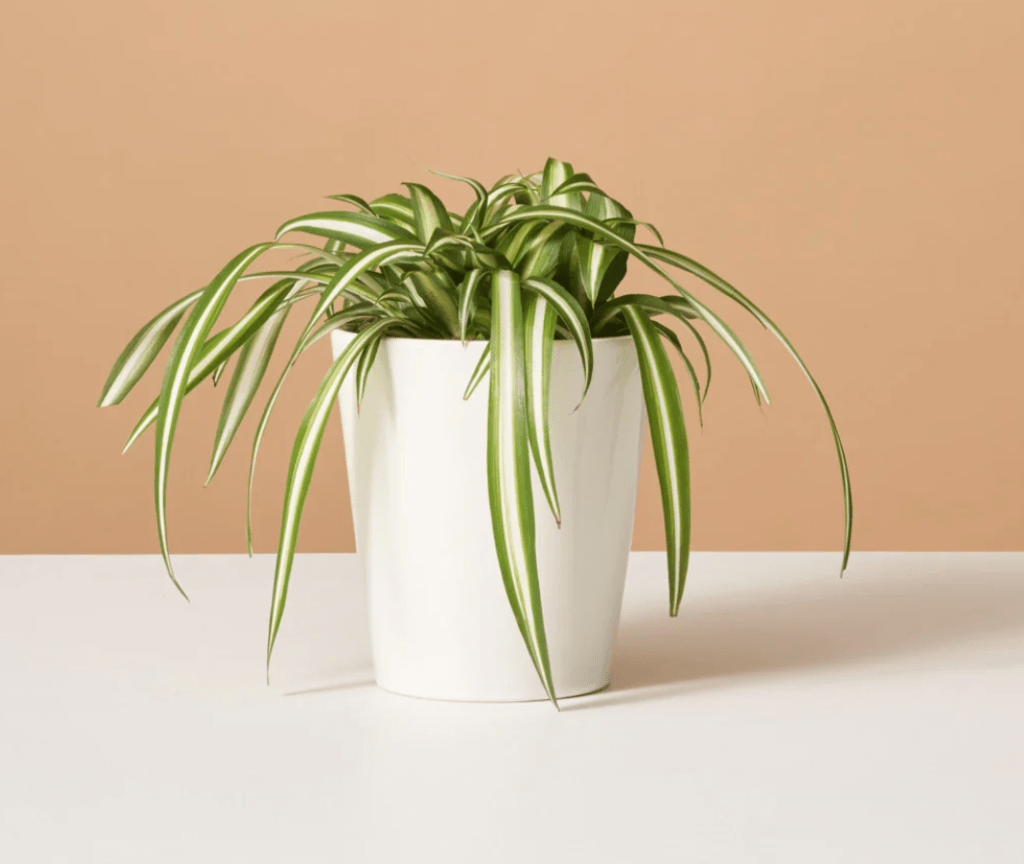
($69)
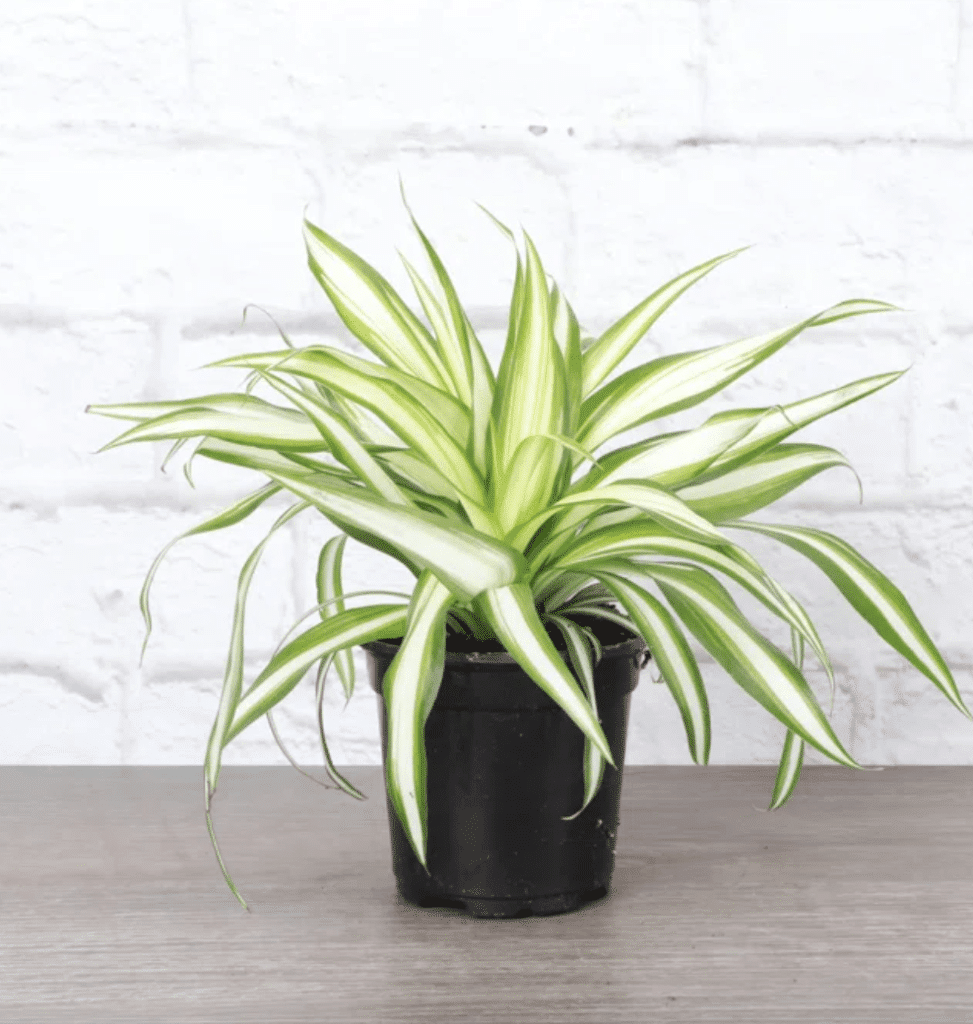
($37)
$15
“This plant is very forgiving and easy to propagate. Great for plant beginners”
3. String of Pearls

Pet safe
Bright light
Grows upto 8 feet
South/east facing windows
Pet safe
Bright light
grows to 8 feet
south/East facing windows
The String of Pearls (aka Senecio rowleyanus), part of the Asteraceae family, brings a sculptural, slightly surreal vibe to shelves with its trailing strands of round, bead-like leaves. These pea-shaped pearls grow along thin stems that can cascade over 3 feet indoors, giving the plant its signature waterfall effect.
We’ve placed ours in a terracotta hanging planter in a sunny south-facing living room. The terracotta keeps the soil dry between waterings, which this drought-tolerant succulent loves.
We let ours hang over the edge of a high shelf so the strands can trail freely like a living curtain!
Care tip:
- Water only when the soil is completely dry, about once every two to three weeks.
- Watch for shriveled pearls, which means it needs more water.
- And avoid letting water sit in the saucer of your hanging planter to prevent root rot
Propagation tip:
- Cut a 4-6 inch stem, remove the bottom pearls, and place it in water;
- roots will appear in 2-3 weeks, then transfer to a well-draining cactus mix once roots are 1-2 inches long
Symbolism and zodiac signs:
- Symbolizes joy and vibrant energy, making it perfect for enthusiastic and nurturing Leos who thrive on bringing life and color into their spaces
Pros and cons

($58)

($33)
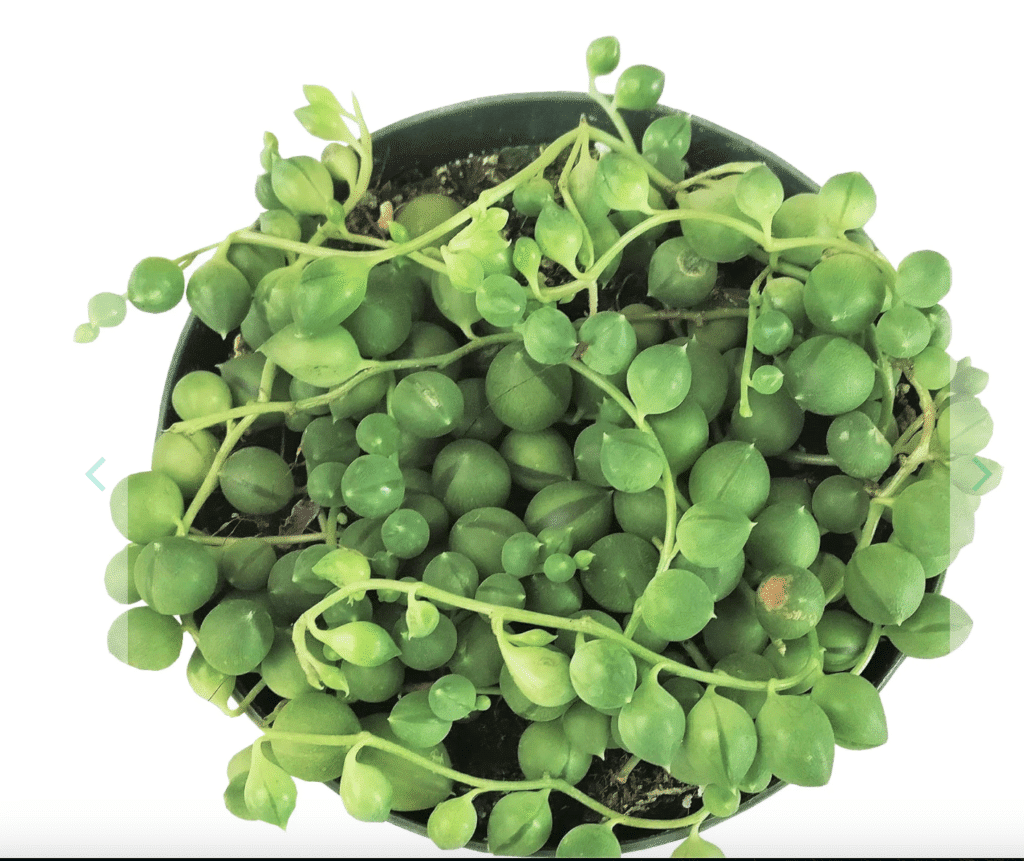
($38)
$10
“Like pearls they drape over my window and i have tied it up so that it goes up and covers the whole rectangle of my window frame!”
Best trailing indoor plants for shelves and hanging baskets that are also safe for pets
-Spider plant, Peperomia, and Burros tail!
Styling Tips: How to Display Trailing Plants on Shelves and in Baskets

Use Floating Shelves, Staggered Mounts, or Tiered Ladders
Floating shelves have become one of our favorite ways to show off trailing plants. The key is to stagger the heights—either with different shelf placements or by using something like a ladder shelf—so the vines can grow down without running into each other. We’ve got a golden pothos on the top tier of a leaning ladder shelf and a string of pearls on the one below. The way they spill down in layers adds so much depth without needing any extra furniture!
Style in Odd Numbers or Trailing Lengths for Natural Look
We try to style our trailing plants in groups of one, three, or five—especially when we mixed short trailers with longer ones. A heartleaf philodendron, a curly spider plant, and a shorter pilea made this beautiful little cascade across the shelf. It’s got that asymmetrical balance that feels more organic, more like something that just grew that way, rather than being placed there.
Use Macramé Hangers, Wall Hooks, or Ceiling Anchors
We avoided ceiling planters for the longest time because, honestly, the idea of drilling holes was scary. But once we found heavy-duty adhesive ceiling hooks and wall anchors, it opened up so many options. Now we’ve got a burro’s tail in a handmade macramé hanger in the hallway, and it swings gently when someone walks by—super peaceful. Macramé adds that cozy, boho vibe, and it keeps the plant up high where the light hits just right!
Mix Trailing with Upright Plants for Visual Contrast
When styling trailing plants with upright plants like snake plants, ZZ plants, or even a compact rubber plant, it creates these layered plant moments—upright growth pulling the eye up, while vines fall and add movement below. One of our favorite combos is a shelf with a tall dracaena in a concrete pot on one side and a trailing tradescantia zigzagging down the other. It makes the whole thing feel balanced and styled without trying too hard.
Read also: our guide to train vining plants to climb, and how to grow longer vines
Conclusion
Whether you’re styling a cozy shelf nook or turning your ceiling into a canopy of green, trailing houseplants are a design (and mood) upgrade. With the right combo of shelf-compact plants and basket-friendly cascade growers, you can build a dynamic, layered look that’s alive with movement.
So pick your favorites, grab a pot, and let your vines spill over with personality. 🌿 Don’t forget to check pet safety and light needs—and watch your indoor jungle thrive!
